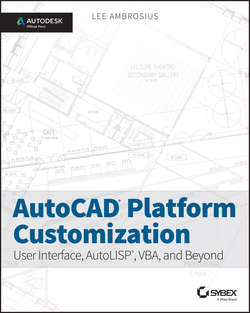Читать книгу AutoCAD Platform Customization - Ambrosius Lee - Страница 8
На сайте Литреса книга снята с продажи.
Introduction
Customization in AutoCAD
ОглавлениеCustomization is one of the feature areas that sets AutoCAD apart from many other CAD programs. Even though the product can be used out of the box, configuring the user interface and modifying the support files that come with the product can greatly improve your productivity. By customizing AutoCAD, you can streamline product workflows and create new ones that are a better fit with the way your company works. These workflows might range from importing layers and styles into a drawing to the extraction of drawing-based information into a spreadsheet or database.
Not all of the customization features require you to learn a new tool or skill set; chances are you might have customized AutoCAD and not even realized it. If you have ever created a layer or a block, you already understand some of the customization features of AutoCAD.
The following outlines many of the common customization and programming options available:
Basic
• Layers
• Annotation styles (text, dimensions, multileaders, and tables)
• Layouts
• Blocks
• Plot styles
• Plotters
• Page setups
• Materials, visual styles, and render presets
• Drawing templates
• Command aliases
• User profiles (Windows only)
• Workspaces (Windows only)
• Desktop icon customization (Windows only)
• Tool palettes (Windows only)
Intermediate
• Scripts
• User interface (CUIx) and DIESEL
• Linetypes and hatch patterns
• Shapes and text styles
• Action macros (Windows only)
• Dynamic blocks (Windows only)
Advanced
• AutoLISP
• ObjectARX
• Visual Basic for Applications (Windows only)
• ActiveX/COM (Windows only)
• Database connectivity (Windows only)
• Sheet Set Manager API (Windows only)
• CAD Standards plug-ins (Windows only)
• Transmittal API (Windows only)
• Managed.NET (Windows only)
• JavaScript (Windows only)
